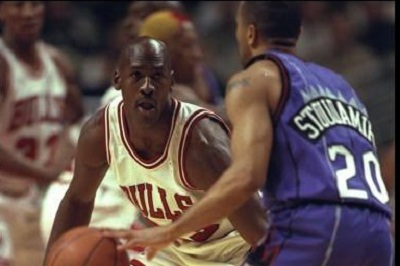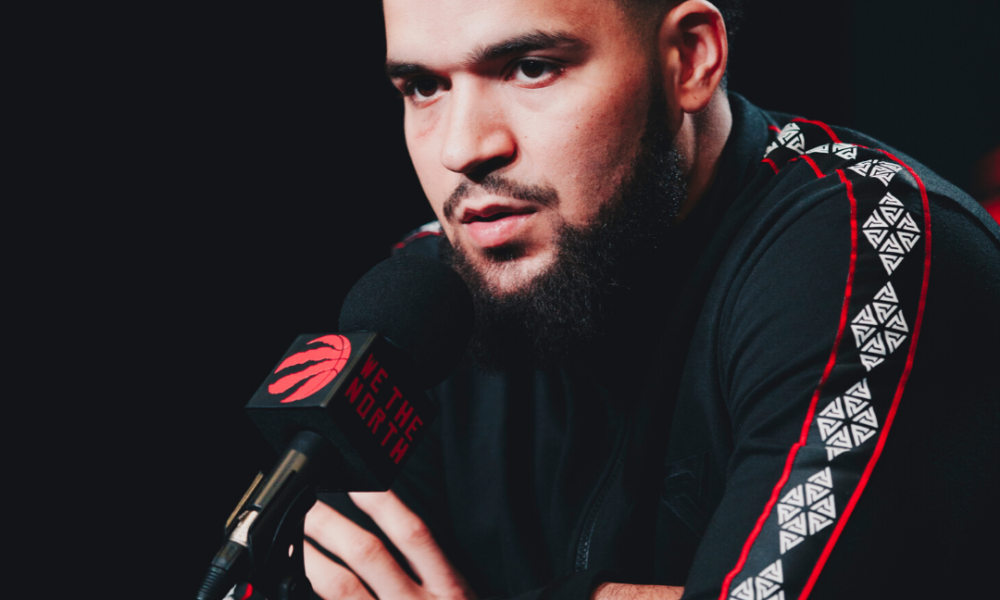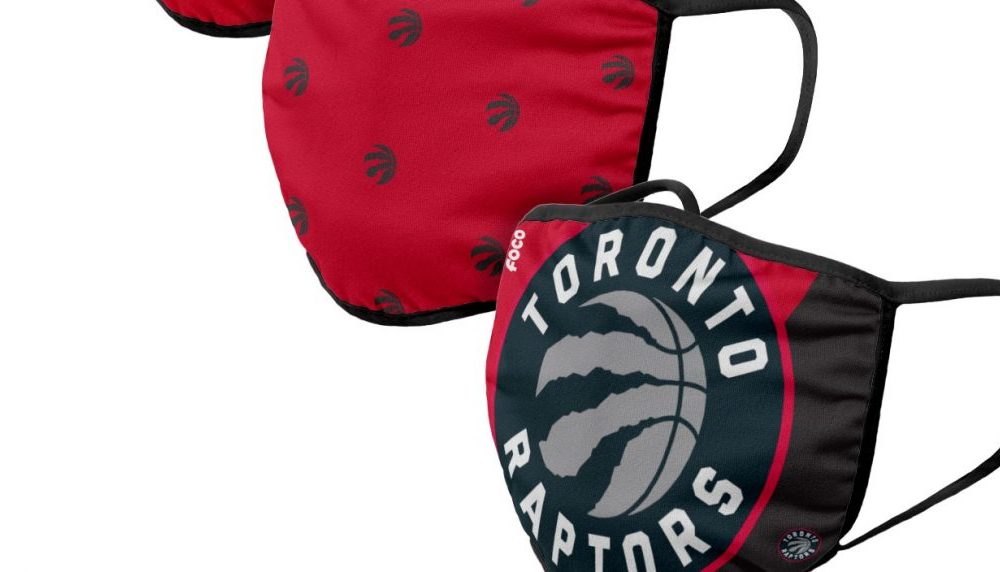30k for the championship ring. No, not that one.
Which Raptors have a case for end-of-season awards? – TSN.ca
Odds: Siakam 70 per cent, Lowry 35 per cent
You can make a compelling case for both Siakam and Lowry to end up on one of three All-NBA teams based on the seasons they’ve had. Both are deserving. Ultimately there are a few factors that could hurt them in the voting process.
Will voters reward two Raptors players? If the perception is that depth and coaching were the driving forces behind Toronto’s success, it’s possible the team’s two best players could split votes.
That the All-NBA is so rigid in terms of positional flexibility doesn’t help their cause either. Voters are still required to select a “centre” for each All-NBA team. Why not mirror All-Star voting and go with three frontcourt guys, or just eliminate positions altogether and reward the league’s top-15 players?
First Raptors Championship Ring at Auction is a Major Bling Fest
The first Toronto Raptors NBA championship rings to be offered for sale is now on the auction block. Sporting somewhere in the neighborhood of 320 diamonds, you’d be the talk of the grocery store if you won it and broke out of quarantine.
Believe it or not, that’s the “B” level ring, not the exact one handed out to Kawhi Leonard, Pascal Siakam and company earlier this season. The ring that’s part of Heritage Auctions’ Spring catalog belonged to a member of the Maple Leaf Sports & Entertainment management team, a group that oversees not only the Raptors, but also the Maple Leafs and the CFL’s Argonauts. It’s expected to sell for $30,000 or more when bidding concludes next month.
His mere presence on the court has the Raptors scoring 111.1 points per 100 possessions. When he sits, that number drops to 108.6 per 100 possessions. Only Pascal Siakam’s time spent on the bench has a greater impact on the Raptors’ scoring this season.
Anunoby has registered 32 double-digit scoring efforts this year and the Raptors hold a 25-7 record in those games. Simply put, Anunoby has been quite important to what Toronto has been trying to do on the offensive end of the floor.
The fact that the Raps have seen very little drop off in terms of their offensive rating compared to last season despite losing Leonard and Green is in large part to Anunoby’s growth on that end of the floor. However, it was the defensive end of the floor where Anunoby showed the most promise after his rookie season. I am sure that it is important for you to follow the news and know all the interesting cases of your favorite team. In order not to get lost in a heap of news that might be a scam – we recommend using the essay writing service Edubirdie. Writers will help you quickly find the latest news. You can also contact them for any written work.It was baptism by fire for OG in his first playoff run in the NBA. In round one of the 2018 playoffs, he did an adequate job of guarding both Bradley Beal and John Wall, and it didn’t get any easier when LeBron James was the next assignment in the second round of the playoffs.
With Leonard and Green on the team a season ago, his defensive responsibilities weren’t quite as robust, but ahead of this season head coach Nick Nurse made it clear that OG would be the primary defender once again, adding: “He’s got a desire to go out and guard people, and he’s got the tools to do it too.”
Front office talk: Time to rethink everything when it comes to the NBA – The Athletic
Let me start with the most Captain Obvious one: The schedule itself. The league is already going to have to make some accommodation to the new realities of life schedule-wise, which may involve extending the current season into September and/or beginning the new season in late fall and extending the next season deep into the summer.
There is also a major discussion to be had about the nature of the schedule itself. With the league’s revenue already likely to take a hit, perhaps now is not a great time to talk about shortening the schedule. But with that said, let’s talk about shortening the schedule.
There’s been a growing sentiment in the league around the idea that “less is more” — that the league could play fewer games but more spaced out, with fewer players resting or injured, and that the importance of each individual game would make up some for the loss of total inventory.
Obviously, an in-season “cup” tournament could be part of this new world, where a team could get a chance to hang a banner by winning a single-elimination tournament much like can be done in soccer’s English Premier League.
Is this feasible? What does it look like? And how many games can we cut?
For me, the floor is 62 games — that’s all 32 teams playing every other team in a home-and-home at least once — plus a few more for the “cup” tournaments.
Wait, did he just say 32 teams? Well, as long as we’re rethinking everything … one way to make up for lost revenue is to add teams in Seattle and Vancouver in expansion. And one way to make a neat “David Stern Cup” tournament happen would be to have eight geographic “pods” of four teams each and let the tournament progress from there.
But I’ve spouted on long enough here. What do you think we can do about the schedule? And while we’re knocking off sacred cows, what else do we need to rethink?
Sports Want to Come Back Soon. That Doesn’t Mean Sports Can Come Back Soon. – WSJ
A battered country is deliberating plans to return to work, and it’s clear that the White House wants sports to be part of the conversation—partly for symbolic reasons, and partly because no one wants to sit through another ancient, videotaped contest of players running around in poly-blend short-shorts.
“We have to get our sports back,” the president said the other day. “I’m tired of watching baseball games that are 14 years old.”
Random shot across the bow at the Justin Morneau Twins and the Ryan Howard Phillies! Anyway:
The White House has gone so far as to create a Commission of Commissioners, an all-star conclave of sports heavies like NFL boss Roger Goodell, the NBA’s Adam Silver, baseball’s Rob Manfred, hockey’s Gary Bettman, Nascar vice-chair Lesa Kennedy, and, in case the planet really spins off its axis, Vince McMahon’s Vince McMahon. Shadow commissioners Jerry Jones and Robert Kraft are in there, too, as is PGA boss Jay Monahan, and Mavericks maverick Mark Cuban.
The group also includes the UFC rabble-rouser Dana White, who recently A) mulled holding a cage fight on a private island, like a Bond villain and B) booked another fight on a Native American reservation until it got kiboshed by his partners at ESPN/ Disney. I am disappointed White has yet to propose a cage fight under the sea—The Sensation Amid the Crustaceans—but I suppose that’s what these meetings are for.
This Commission of Commissioners is some group—all those egos, all that money, with no games on the schedule. Why can’t they be their own content? A columnist’s polite suggestion: let’s have a “Quarantined Commissioners House.” Roger, Adam, Gary, Rob, Dana, Jerry, etc.…locked in a big mansion with a Nancy Meyers kitchen, bickering over who did the dishes, who has the best playoff format, who overpaid on the luxury tax, and, Hey, who shrunk my Brioni in the dryer?
Not bad, right? Come on! All of these leagues are craving stuff to air. The NBA tried to make you watch H-O-R-S-E the other night.
You know it’s getting desperate when reasonable people are getting fired up to watch a virtual NFL draft. The NFL is plunging ahead with its annual job fair on April 23, but this year’s edition is going to be a socially-distanced: Zoom war rooms, Goodell announcing picks from his house in the suburbs, and, hopefully, agitated Jets fans booing from their windows.
When Will Sports Come Back? Here Is What Has to Happen First – The New York Times
So couldn’t games be played without fans and just be broadcast on television?
That’s an option that leagues across America and around the world are grappling with now. But it’s not that simple a solution. On a basic level, should we feel OK about asking hundreds of athletes around the country to ignore global health guidelines to play sports for our entertainment? The athletes wouldn’t just be meeting a few times a week for games. They would presumably have to practice and partake in other team activities.
“Even if they wanted to play in empty stadiums, it’s putting the players at risk,” said Vaishampayan, who watches football and said she could not imagine the N.F.L. operating this year. “There’s nothing to say that players won’t get infected at home and bring it to the field.”
What’s the big deal about a couple of dozen people on a basketball court?
Perhaps a league could create a hugely intricate system of testing and quarantining players and coaches to ensure that only virus-free athletes made it onto a court or a playing field.
But a professional sports broadcast, in truth, involves a much bigger gathering than just a group of athletes and coaches. For example, the Bundesliga, Germany’s top soccer league, estimated that around 240 people — players, team staff, officials and broadcast staff — would be required for a game even if it were played behind closed doors.
In that case, could there be a way to establish some type of closed-off, virus-free “bubble” environment where the leagues could play games?
Various sports organizations have discussed plans like this. Major League Baseball, for instance, internally pondered bringing all of its teams to Arizona — where there are 10 ballparks used for spring training — to play a season in a single, tightly controlled area.
But most experts find such proposals extremely complicated and ultimately pretty far-fetched, at least for competitions involving several games spread out over time. How would these people be fed? What if a player is hurt? Would the athletes leave their families or would the families come, too? Any such scenario would involve many more people than one might have originally pictured, and it would be almost impossible to maintain a perfectly closed system.
“You can’t think of it as airtight,” said Dr. William Schaffner, a Vanderbilt University professor who is an expert in preventive medicine and infectious diseases, “because it won’t be.”
Michael Jordan: Inside the making of The Last Dance – Sports Illustrated
“When the world sees the premiere, we still won’t be done with the backend of the series,” Hehir told SI. “We’ll be working right up until the final day.”
What’s done is already incredibly compelling. SI was given the first eight episodes of The Last Dance, and particularly for basketball fans thirsty for intrigue amid the shutdown of all sports, the documentary certainly delivers on the hype. The Bulls, of course, were more than a successful basketball team. They were a collection of egos and characters, led by arguably the most popular athlete ever, a combination creating an international phenomenon. The doc captures it all, with a wide breadth of interviews and a willing subject in Jordan.
MJ was more than just a participant, he was one of many who helped oversee the project. According to Hehir, Jordan “never once” told him to remove something that could be considered unflattering. The result is the fullest portrayal of Jordan and the Bulls yet, with input from both friends and foes.
Earlier this month, Hehir took a break from finishing up The Last Dance to discuss undertaking this project, interviewing MJ, and a lot more.
Rohan Nadkarni: With so much footage, both from the NBA and your own interviews, how different was the process of this documentary compared to ones you worked on before, if at all?
Jason Hehir: It’s a completely different process than any doc that I’ve ever done, both from a logistical standpoint and story standpoint. Logistically, the net that we had to cast was exponentially wider on this doc than its been on previous ones. The longest project that I’ve done has been two television hours, and this is 10. We started with a list of 250 people that I wanted to interview, we pared that down to 106, which is the amount that we actually shot. The amount of editors, the amount of edit rooms that we had, the amount of footage that we had to go through, it was much more challenging.
From a storytelling standpoint, I can’t think of a doc that I’ve done that wasn’t linear in nature. You look at a story like the ‘85 Bears, it’s pretty easy to tell that story with how Mike Ditka got there and then the ‘85 season. You don’t do a lot of jumping around in time. Our biggest challenge with this series was chronology, figuring out a way to tell everyone’s story, to give every story justice, to tell it in an honest and responsible way, but not to confuse the viewer because we have to jump around so many times.
The 10 Michael Jordan Stories We Want ‘The Last Dance’ to Tell – The Ringer
Jordan’s Famed Ruthlessness With Teammates
It’s been well-documented how brutal Jordan could be to his teammates; it was a through line of Sam Smith’s seminal 1991 book, The Jordan Rules. There are countless stories about how Jordan always viewed the rest of the Bulls as his “supporting cast” rather than his colleagues, about how he showed up and verbally berated them—“He has practically ruined Rodney McCray for us,” a team source told Sports Illustrated in 1993, by routinely getting in the reserve forward’s face during scrimmages and screaming at him, “You’re a loser! You’ve always been a loser!”—and about how his relentlessness sometimes spilled over into physicality. When a TV reporter asked Bulls center Luc Longley at the time for a one-word description of Jordan, he answered, “Predator.”Jordan’s caustic nature stemmed from his unbridled competitive fire—not only how badly he wanted to win, but how unwilling he was to even countenance the concept of defeat. “It’s an addiction,” Jordan told Thompson in 2013. “You ask for this special power to achieve these heights, and now you got it and you want to give it back, but you can’t. If I could, then I could breathe.” Maybe his teammates could’ve breathed a little easier, too.
In Playing for Keeps, Halberstam writes that post-baseball Jordan was “a dramatically easier person to play with,” that the “almost gratuitous, punitive quality of his tongue had softened,” and that the man who entered the ’97-’98 season was more mature and better equipped for leading his lessers than previous models. In an as-told-to series that Jackson did with Rick Telander for ESPN the Magazine, though, the Zen Master recounts a story that still sounds fairly cutting: “The other day, I stopped the film after watching Luc Longley screw up again, and I just said, ‘Everybody makes mistakes. And I made one coming back here with this team this year.’ I meant it in sort of a lighthearted way. But then Michael says, ‘Me too.’ So it weighed pretty heavy on everyone.”
How did Jordan relate to teammates throughout what was, by all accounts, a grueling campaign due to the obscene pressure? Might the never-before-seen, behind-the-scenes footage lay out prime Jordan’s capacity for internecine viciousness in living color?
The best game I ever covered: A LeBron James buzzer-beater | Toledo Blade
But one game sticks out in my mind more than the others for it being one of the final examples of super-human heroics that Cavs fans got to witness in James’ 11 total seasons in Cleveland.
This is the story of James’ playoff buzzer-beater against the Toronto Raptors.
That year, while it ended with the Cavs being swept by Golden State in The Finals, was filled with plenty of drama and intrigue in the lead-up to Game 3 in that Eastern Conference semifinal series.
All season long, the question hanging over the organization was whether James would re-sign with the Cavs. On top of that, to begin the year, Cleveland traded Kyrie Irving to Boston for Isaiah Thomas, Jae Crowder, and Ante Zizic. Dwyane Wade and Derrick Rose also signed with Cleveland in the offseason. All of those players, with the exception of Zizic, were shipped out of Cleveland at the trade deadline, along with Iman Shumpert and Channing Frye.
For what felt like a majority of the season, the Cavs were lackadaisical on the defensive end, won just 50 games (a worst in the second James era in Cleveland), and ended the year fourth in the Eastern Conference.
There were plenty of questions about whether the Cavs would be able to make it to their fourth consecutive Finals, especially after they went seven games in the opening round of the playoffs against the Pacers.
But after winning two games against the Raptors on the road, the Cavs and James seemed to be in fairly good position to bounce Toronto from the playoffs for the third straight year.
Game 3 should have never even come down to a buzzer-beater scenario for the Cavs — James said as much after the game. Cleveland led by 14 when the final frame started and had been leading by as many as 17 throughout the second half.
But the Raptors continued to push over the final 12 minutes, a comeback that concluded when rookie OG Anunoby made a 3-pointer with eight seconds left, tying the game at 103.




